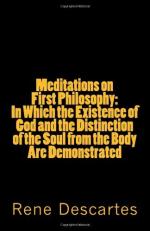But this continual propagation of every species is a wonder with which we are grown too familiar. What would a man think of a watchmaker who should have the art to make watches, which, of themselves, should produce others ad infinitum in such a manner that two original watches should be sufficient to multiply and perpetuate their species over the whole earth? What would he say of an architect that should have the skill to build houses, which should build others, to renew the habitations of men, before the first should decay and be ready to fall to the ground? It is, however, what we daily see among animals. They are no more, if you please, than mere machines, as watches are. But, after all, the Author of these machines has endowed them with a faculty to reproduce or perpetuate themselves ad infinitum by the conjunction of both sexes. Affirm, if you please, that this generation of animals is performed either by moulds or by an express configuration of every individual; which of these two opinions you think fit to pitch upon, it comes all to one; nor is the skill of the Artificer less conspicuous. If you suppose that at every generation the individual, without being cast into a mould, receives a configuration made on purpose, I ask, who it is that manages and directs the configuration of so compounded a machine, and which argues so much art and industry? If, on the contrary, to avoid acknowledging any art in the case you suppose that everything is determined by the moulds, I go back to the moulds themselves, and ask, who is it that prepared them? In my opinion they are still greater matter of wonder than the very machines which are pretended to come out of them.
Therefore let who will suppose that there were moulds in the animals that lived four thousand years ago, and affirm, if he pleases, that those moulds were so inclosed one within another ad infinitum, that there was a sufficient number for all the generations of those four thousand years; and that there is still a sufficient number ready prepared for the formation of all the animals that shall preserve their species in all succeeding ages. Now, these moulds, which, as I have observed, must have all the configuration of the animal, are as difficult to be explained or accounted for as the animals themselves, and are besides attended with far more unexplicable wonders. It is certain that the configuration of every individual animal requires no more art and power than is necessary to frame all the springs that make up that machine; but when a man supposes moulds: first, he must affirm that every mould contains in little, with unconceivable niceness, all the springs of the machine itself. Now, it is beyond dispute that there is more art in making so compound a work in little than in a larger bulk. Secondly, he must suppose that every mould, which is an individual prepared for a first generation, contains distinctly within itself other moulds contained within one another ad infinitum, for all possible




